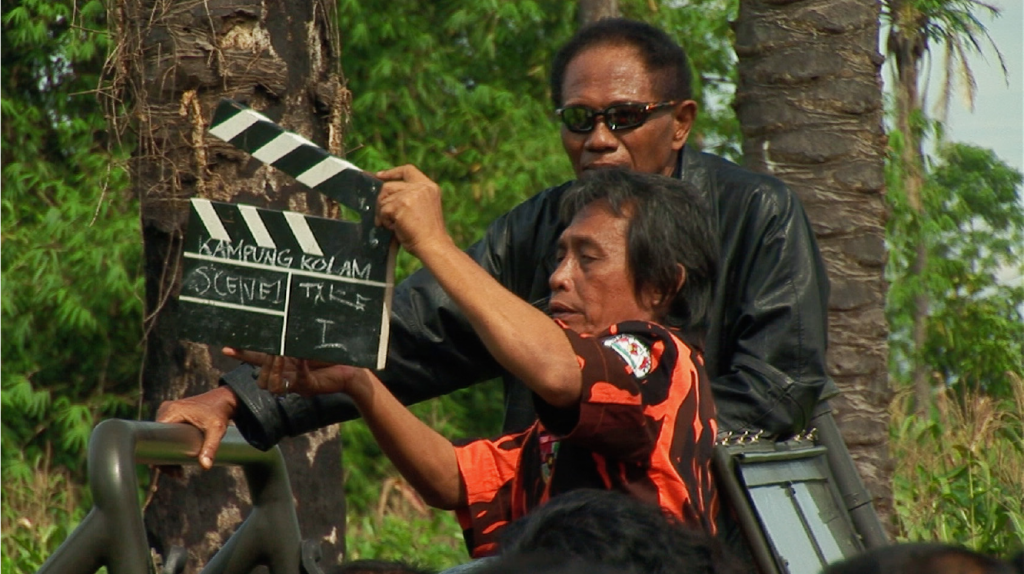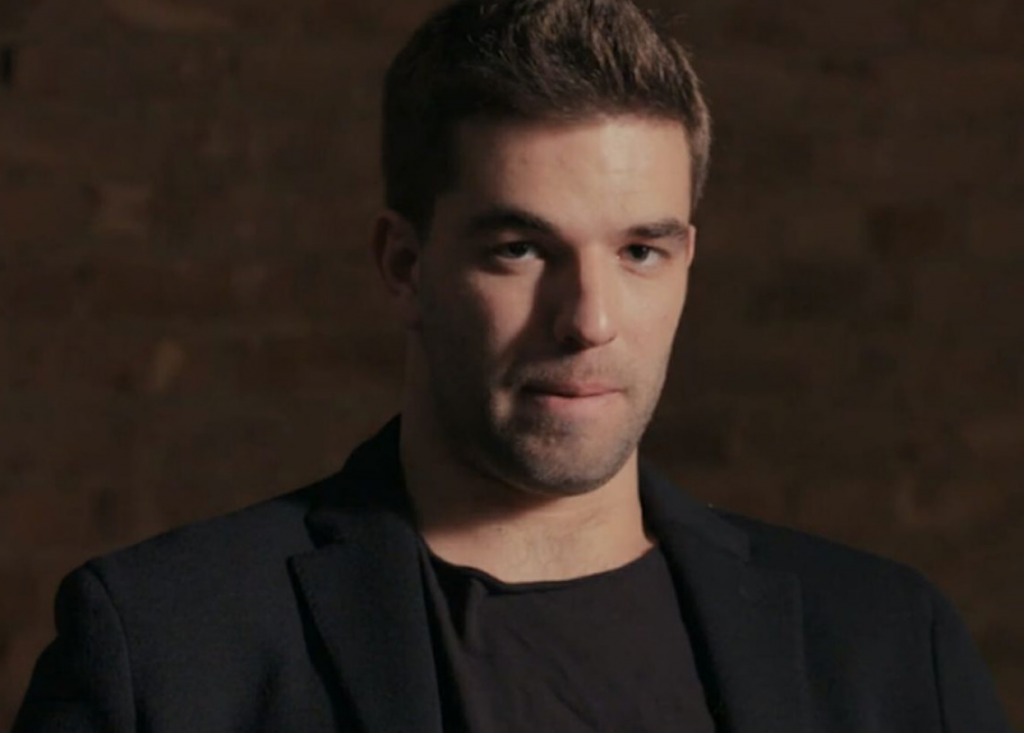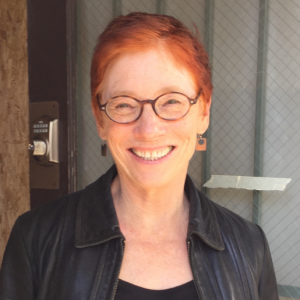What kinds of standards exist to articulate expectations for behavior and performance for the documentary field? Currently, the field lacks public and common standards documents. Some corporations have internal, proprietary standards and practices documents, although documentaries produced for those companies’ entertainment divisions are not typically subject to the standards and practices relevant to journalism. PBS’s standards, which are public, are widely regarded by filmmakers as unduly onerous and restrictive, specifically around funding, although they are successfully used by producers for hundreds of hours of programming each season.

Filmmakers chose not to discuss publicly Act of Killing’s choice for re-enactment of political murders.
Although a Center for Media & Social Impact 2009 report, Honest Truths, revealed deep frustrations in the field with working conditions forcing documentarians to violate their own moral code, filmmaker organizations have so far resisted initiating any efforts to establish ethics codes (Aufderheide, Chandra & Jaszi, 2009). The aversion of most media lawyers to ethics codes has reinforced concern in the field to having any such standards documents. (Lawyers fear that any standards documents will create opportunities for litigation, with plaintiffs using interpretations of standards as ammunition.) Several efforts led by BIPOC filmmakers are currently in development, to articulate ethical values for productions, but they have yet to be finalized, and must then circulate, cultivate endorsements, and be adopted and used by production entities.
In the absence of membership-backed, field-specific ethics codes, some documentarians use related tools. Some film teachers have resorted to using No Film School’s “Basic Filmmakers’ Code” (Renée, 2019) as a rough guide. Journalistic ethics codes, most importantly that of the Society of Professional Journalists, are also used. SPJ’s Code of Ethics has four general categories: Seek truth and report it; minimize harm; act independently; and be accountable and transparent (Society of Professional Journalists, 2014). These are highly similar to the concerns of filmmakers as expressed in Honest Truths. However, many filmmakers, often without ever looking at SPJ’s code, reject the notion that their aesthetically-rich work can be compared to journalism, especially daily journalism. Meanwhile, their viewers do routinely assume that they’re observing basic journalistic standards.

Hulu’s Fyre Fraud paid its lead interviewee (Fyre con artist Billy McFarland, above) for access, and Netflix’ Fyre was co-executive produced by one of the entities involved in the fraud.
Lacking public consensus, the documentary filmmaking field most commonly holds ethics discussions privately. Filmmaker AJ Schnack noted in 2014, “one constant gripe within the world of documentary has been a need for more writing and better criticism about the craft of the filmmaking (as opposed to summaries of the plot or lionizations of the subject).” And yet, he also wrote, it wasn’t easy to rise beyond muttered conversations in hallways and over drinks. Public criticism is often seen as a betrayal of an embattled community. (Schnack, 2014)
We heard from interviewees, for instance, that Blackfish’s (2013) stellar ratings and reviews did not reflect widespread but quiet criticism among filmmakers. But they did not want to share the critique with us, even with promise of confidentiality. Sarah Polley’s Stories We Tell (2013) conversely may have lost out on an Academy Award nomination, one person speculated, when no one from the field publicly defended the role of reenactment in the film and her claims for it.
When controversy breaks out and the filmmaking community notices, it can be around grandstanding polemics. This is what happened around Act of Killing (2012), when a notoriously acerbic broadcast programmer, Nick Fraser, and an equally acidic filmmaker/critic, Jill Godmilow, both lambasted the film for different reasons. Their self-righteousness and pontificating created a solidary wall of resentment in the filmmaking community, and discussion stopped, after social media shaming of the two polemicists. (Schnack, 2014)
Sometimes criticism has resulted in wider public conversation, but not necessarily with followup. Morgan Neville’s casual admission that he had faked elements of Roadrunner created a spate of coverage, both from reporters and critics. Neville had used AI to recreate the voice of his subject Anthony Bourdain, reading intimate correspondence he had written; he also created a mural that was represented as one of many that had sprung up, which Bourdain’s friend defaced theatrically at the end of the film. Neville’s open and unforced admission startled many, who went to Twitter to say that they experienced the manipulations as a betrayal. He was unmoved, though; he appeared confident in his decision. “We can have a documentary-ethics panel about it later,” he told The New Yorker (Rosner, 2021).
Davis Guggenheim’s Waiting for “Superman” (2010) argued that charter schools could solve problems created by poor public education. The film was initiated by and produced by Participant Productions, which included investors in charter schools on its board. The film received some negative comments from critics. It also mobilized the ire of teachers’ unions and education scholars, including lengthy articles by education policy expert Diane Ravitch in the New York Review of Books, some who made a rebuttal film and one who made a critique video of main points (Trier, 2019). That controversy however was not reflected back into either arts journalism or the documentary filmmaking community. Nor did it apparently have a reputational effect. Guggenheim continues to be a favored choice for well-funded projects at his Concordia Studio. Concordia has the backing of Laurene Powell Jobs (Morfoot, 2021a).
Two documentaries that appeared almost simultaneously about the debacle of the Fyre Festival, Netflix’s Fyre (2019) and Hulu’s Fyre Fraud (2019) attracted wide journalistic attention, but mostly for the fact that both appeared at the same time. One article, however, went into depth about ethical problems in Netflix’s documentary (Livingstone, 2019), and others noted that Hulu’s documentary involved paying a key subject. However, Chris Smith, the creator of Fyre, appears untouched by the attention. He is a veteran of edgy documentary (American Movie, Yes Men), an executive producer of Tiger King. Netflix in 2021 released his Operation Varsity Blues with wide marketing and to uncritical reviews.
In contrast, when the New York Times was found to have promoted an ultimately false narrative in Caliphate, a podcast that has similarities to documentary film, its narrator was moved off her beat and the producer was ultimately fired. The scandal was too much for the New York Times’ reputation to survive without action.

Edit Media (editmedia.org), a project of film production professors, is developing standards around diversity, equity, and inclusion.
Knowledge about the media industry is largely circulated among filmmakers on a private basis. Better-connected filmmakers may have an inkling of the contract terms for public TV strands, or the ways to approach streaming services, or the implications of accepting equity investment upfront. Business issues may be the topic of film festival panels, usually stocked by interested company reps, and consultants whose business is selling information. Film schools train students to be makers, but typically not to be businesspeople. Organizations such as the Documentary Producers Alliance and a union, Writers Guild of America- East, as well as academic sites such as the Center for Media & Social Impact sometimes report on the filmmaking business, but most filmmakers operate in a world of highly partial knowledge.

 Patricia Aufderheide is University Professor in the School of Communication at American University She is the author of, among other books, Documentary Film: A Very Short Introduction (Oxford University Press), and co-author with Peter Jaszi of Reclaiming Fair Use: How to Put Balance Back in Copyright (University of Chicago Press). She has served on the board of Kartemquin Films, and is a board member of the Independent Television Service.
Patricia Aufderheide is University Professor in the School of Communication at American University She is the author of, among other books, Documentary Film: A Very Short Introduction (Oxford University Press), and co-author with Peter Jaszi of Reclaiming Fair Use: How to Put Balance Back in Copyright (University of Chicago Press). She has served on the board of Kartemquin Films, and is a board member of the Independent Television Service. Marissa Woods is a filmmaker and arts researcher. She is completing a Master of Fine Arts in Film & Media Arts at American University’s School of Communication.
Marissa Woods is a filmmaker and arts researcher. She is completing a Master of Fine Arts in Film & Media Arts at American University’s School of Communication.
